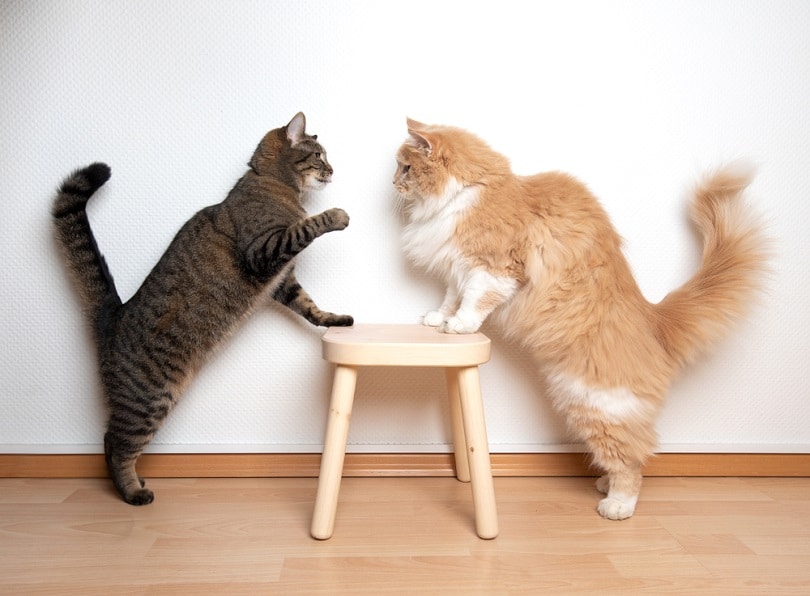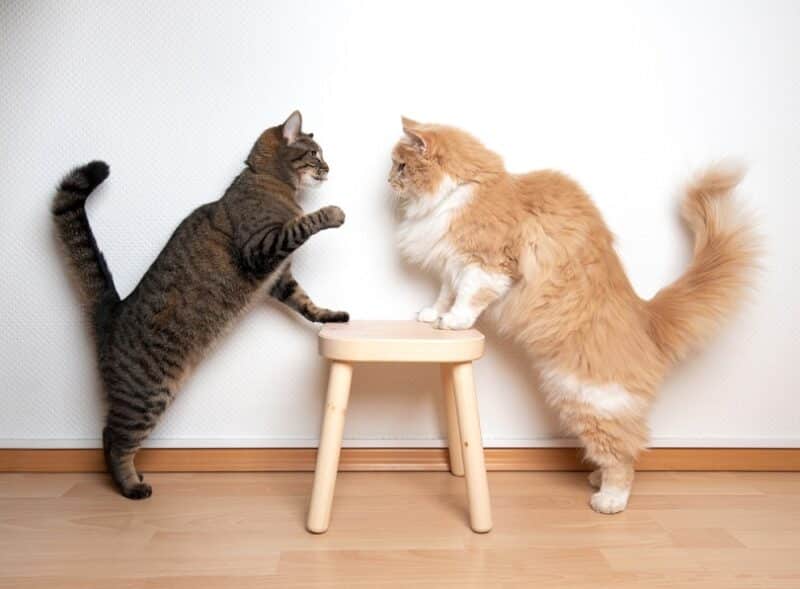You might have heard your neighborhood cats yowling into the night and wonder whether these fights ever result in the death of a cat. Maybe your indoor cats have suddenly started fighting, and you’re concerned that they may injure each other.
You’ve probably noticed that your cat comes armed with impressive weapons in the form of their teeth and claws. It’s true that they can do serious damage with these, but is fighting to the death a common problem in cats? It’s unlikely, but let’s find out!
Why Do Cats Fight?
Cats will usually try to avoid physical fights unless there’s absolutely no other option. That’s because as solitary hunters, their ability to survive is seriously compromised if they’re injured. Most cat fights involve more posturing and vocalization than physical contact.
There are several reasons that cats fight. Let’s take a more detailed look.
Territorial
Cats are naturally solitary and territorial. Living in unnaturally cramped conditions with other cats, whether that’s in your neighborhood or inside your home, can inevitably result in fighting. Cats will fight to defend what they believe to be “their” territory, but this often overlaps with what another cat believes is “their” territory!
Cats mark their territory using pheromones, and any overlapping areas will be up for dispute.
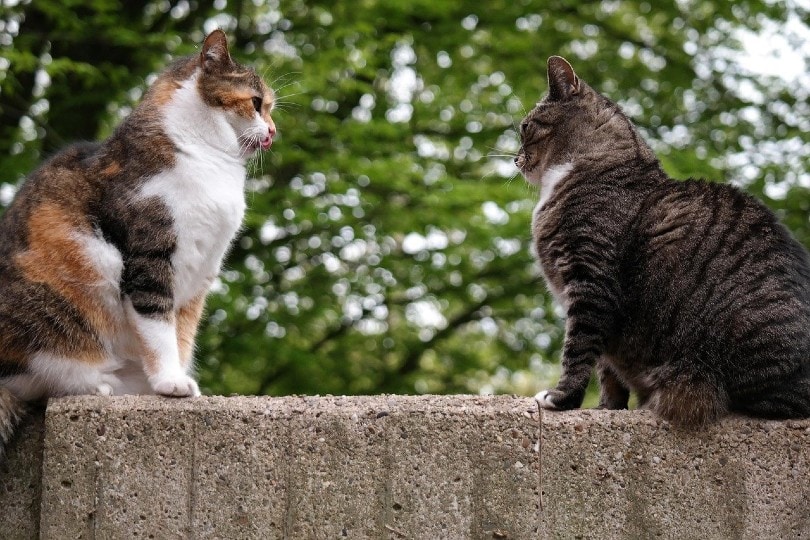
Aggression
Some cats can be more aggressive than others, and this can result in an increase in fighting. Male unneutered cats may be aggressive around other cats, especially if there are females around that they believe that they need to fight over.
Play Fighting
Some cats love to play fight, and occasionally, this can turn into an actual fight. If one cat doesn’t back down or de-escalate the game, then reciprocal playing can turn into something more serious. During a play fight, cats will use the same tactics that they would during a real fight, but they won’t extend their claws or intend to cause real damage.
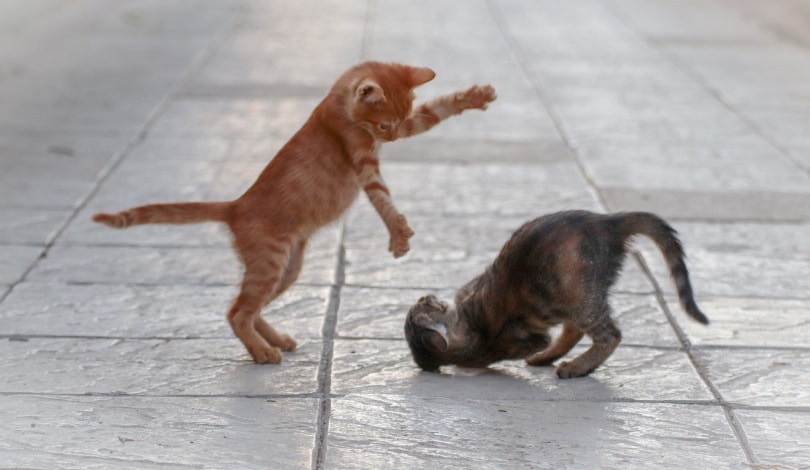
Maternal Aggression
Female cats will be protective of their kittens, so if any other cats approach, the mother may feel like she needs to defend her babies. If hissing, growling, and chasing off the other cat doesn’t work, she may resort to fighting. This can happen even with cats that she was friendly with before.
The good news is that this kind of aggression usually resolves itself after her kittens are weaned.
How Do Cats Fight?
Most cat fights will be non-physical and involve aggressive body language, growling, hissing, and a twitching tail. After a while, the least dominant cat will usually back away slowly and concede defeat. Sometimes, if one cat doesn’t back down, the cats will come to physical blows. This is usually for short periods before they split away and start posturing again.
Even among colonies of feral cats, fights involving sustained physical contact are rare. That’s because cats know that injuries can affect their chance of survival. It’s easier to learn to get along with each other and survive than come to blows and get injured. Fights are usually the last resort.
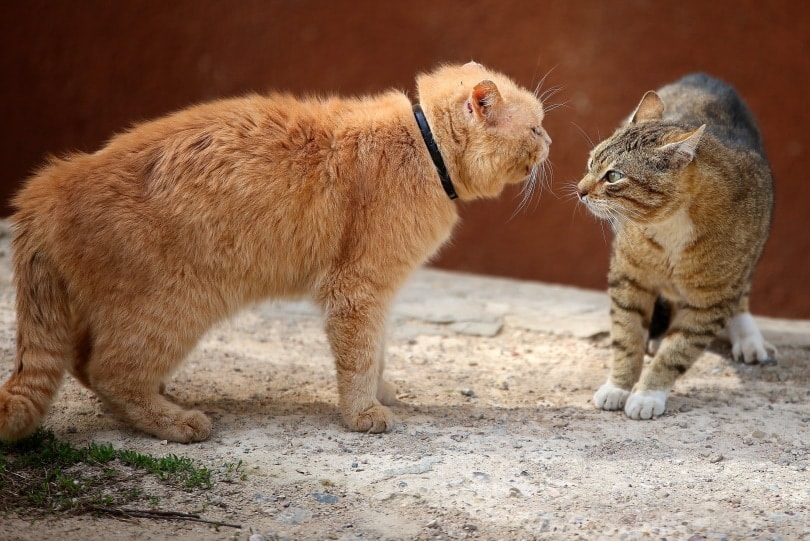
Do Cats Fight to the Death?
Cats are unlikely to kill another cat during the course of a fight. That includes both domestic cats and feral cats. Cat fights are usually more about posturing and vocalization than actual physical contact.
If cats do come into physical contact during a fight, it’s the injuries sustained as a result that could ultimately cause death if left untreated. This is more of a concern for feral or stray cats that don’t have an owner looking out for them.
- Open wounds
- Puncture marks
- Hot spots or pain
- Swelling
- Fever
- Lethargy
- Loss of appetite
Cats’ mouths and claws contain bacteria that can cause an untreated wound to become infected. If left untreated, this can cause ongoing problems for a cat and could eventually cause their death if their body cannot fight off the infection.
Domestic cats will rarely get to this point if they have loving owners who look out for their health and welfare. Wounds can easily be managed by your vet. They may clean and stitch a wound up, lance an abscess, or prescribe antibiotics and other medication.
Cats Fighting Inside the House
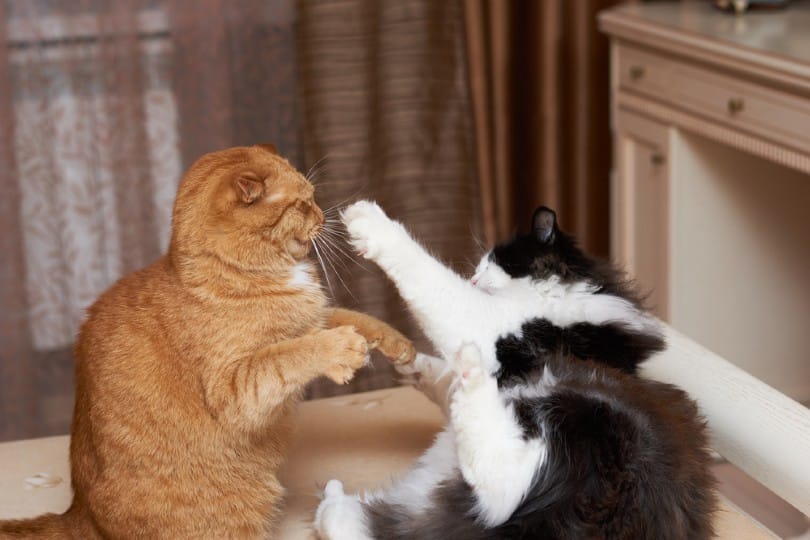
How to Prevent Cat Fights
1. Interrupting the Fight
Never allow your cats to continue fighting. Once started, this can easily escalate, and there’s a higher chance of a cat becoming injured. If you see your cats fighting, make a loud noise, like clapping, to startle them. You could also try to distract them by rattling a treat bag.
2. Separate & Increase Resources
If cats feel like there aren’t enough resources to go around, the chances of them fighting over them increase. Make sure you always offer more resources than there are cats. So, if you have three cats, you should have four feed and water stations and four litter boxes.
That means whenever a cat wants to eat, drink, or do their business, they don’t have to wait for another cat to finish or compete with them for the resource.
3. Spay & Neuter
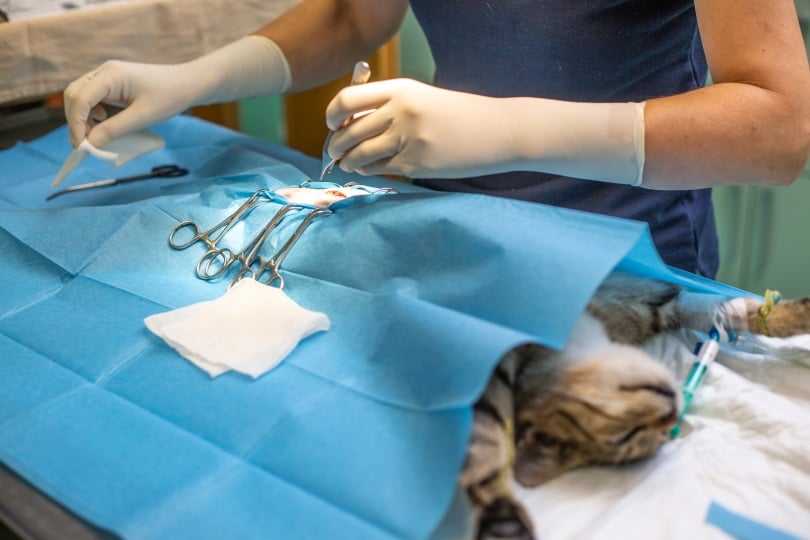
Hormones can cause cats to become more aggressive, with this being particularly likely for unneutered male cats. Speak to your vet about getting your cats spayed or neutered.
4. Reward Good Behavior
If you see your cats interacting nicely, reward them with verbal praise or a treat. Repeat this as often as possible to reinforce the idea that this behavior is desirable.
5. Add Enrichment
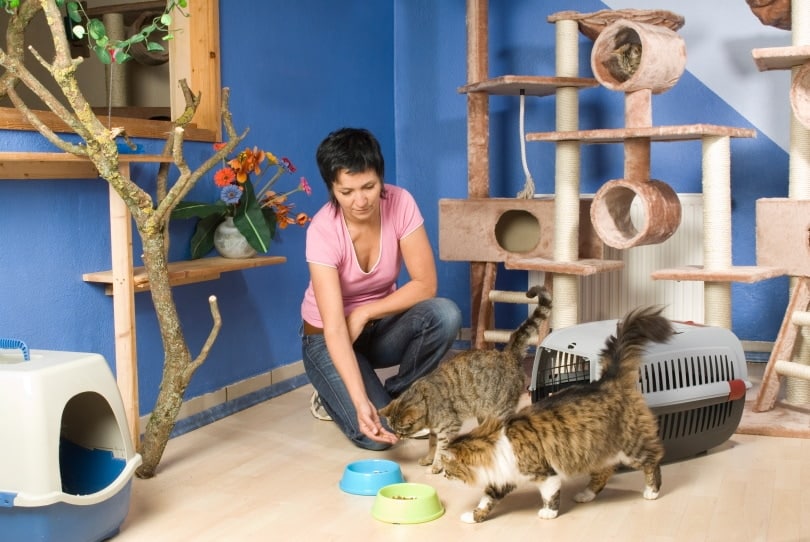
Make sure to offer plenty of enrichment options, like perches, boxes to hide in, shelves, scratching posts, and toys. When cats have multiple objects to play with, it boosts both their physical and mental stimulation, which is good for overall health.
6. Use Pheromones
Some cat owners have good results with using synthetic feline pheromones. You can buy diffusers or sprays that release soothing pheromones into the air. These can make cats feel more secure and less anxious, which in turn, can reduce aggression.
7. Give Them Space
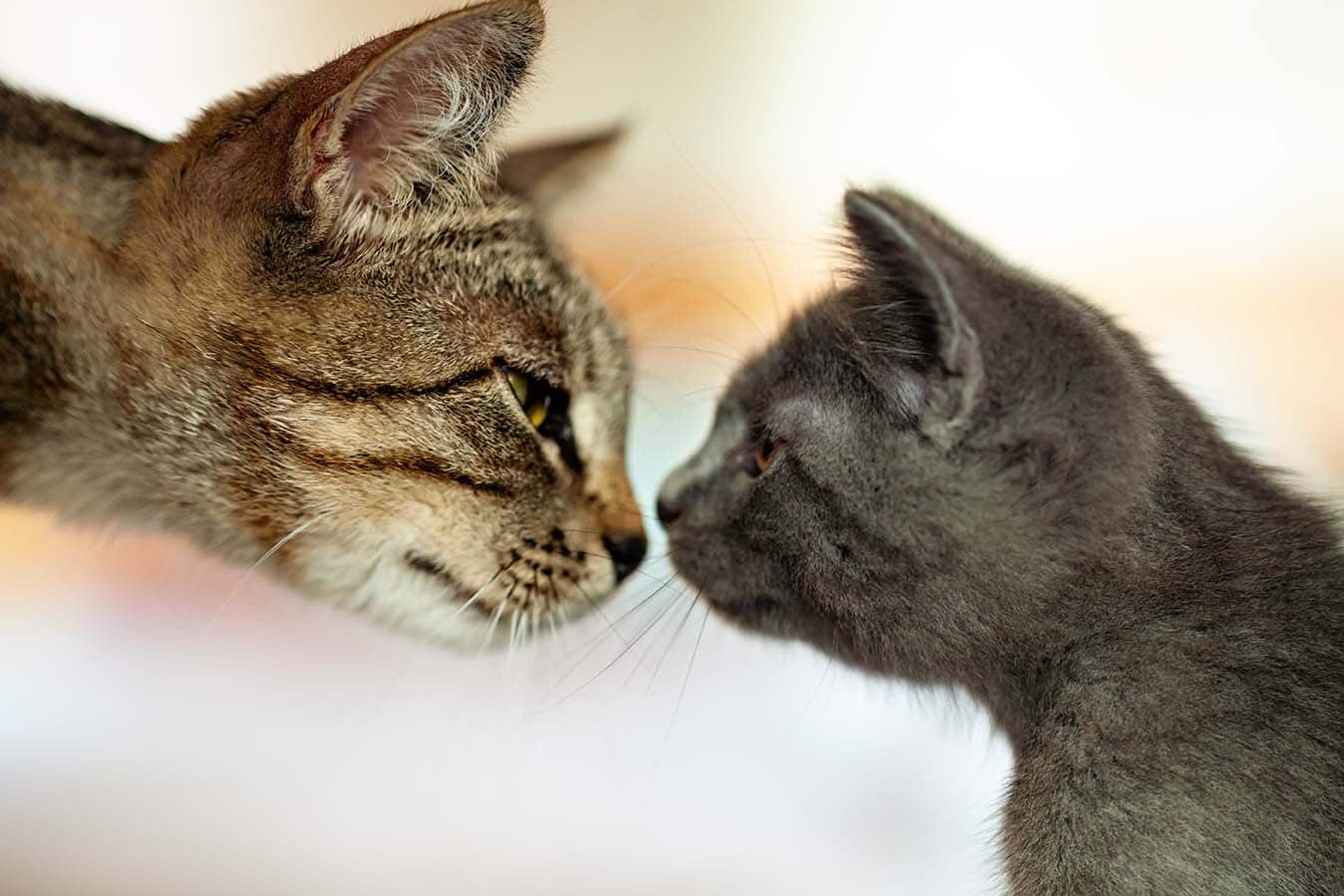
Some cats resent having to share their home with another cat. This can sometimes be an issue for older cats when being introduced to a new family kitten. Make sure each cat has an area of the house where they can go and not be disturbed. Cats can also become over-aroused after a fight, so don’t attempt to pick up or soothe your cat, as they may redirect aggression toward you.
Allow them some time on their own to calm down. They will come and see you when they’re ready!
8. Contact a Cat Behaviorist
If you’re concerned that your indoor cats are fighting so much that the risk of injury is increasing, it might be time to contact a registered cat behaviorist. They may be able to suggest strategies to help your cats get along better and to reduce the number of fights.
Conclusion
Cat fights may look (and sound) spectacular when they’re facing off with another cat, but these encounters rarely result in physical contact. Most times, one cat will back off and concede defeat after plenty of aggressive body language and vocalizations. Cats instinctively know that physical fights can lead to injuries that may leave them unable to hunt. So, physical fights are the last resort.
Cats will rarely, if ever, kill each other during a physical fight. But the injuries sustained from bite or scratch wounds do have the potential to become infected, and left untreated, these could ultimately lead to a cat’s death.
If your own cats are fighting, rest assured that it’s unlikely that they will injure each other, but it’s worth giving them a quick physical check if you do see them fighting. Speak to your vet if you notice any injuries, and take steps to reduce the chances of your cats fighting again in the future.
See also:
- 9 Smells That Cats LOVE You Can Give Your Kitty Today!
- How Does My Cat Know When I Wake Up? Morning Habits Explained
Featured Image Credit: Nils Jacobi, Shutterstock
Contents
- Why Do Cats Fight?
- How Do Cats Fight?
- Do Cats Fight to the Death?
- Cats Fighting Inside the House
- How to Prevent Cat Fights
- 1. Interrupting the Fight
- 2. Separate & Increase Resources
- 3. Spay & Neuter
- 4. Reward Good Behavior
- 5. Add Enrichment
- 6. Use Pheromones
- 7. Give Them Space
- 8. Contact a Cat Behaviorist
- Conclusion

